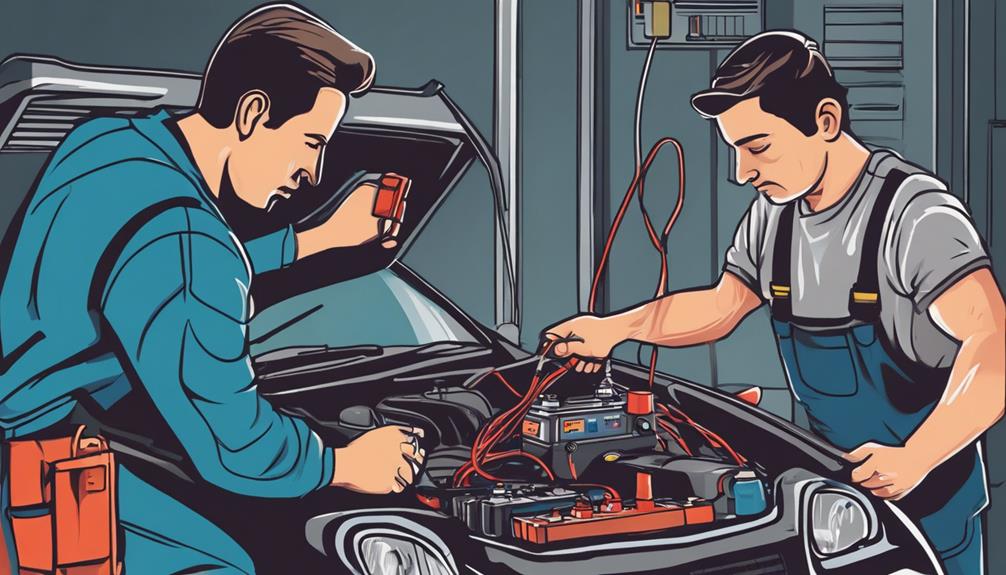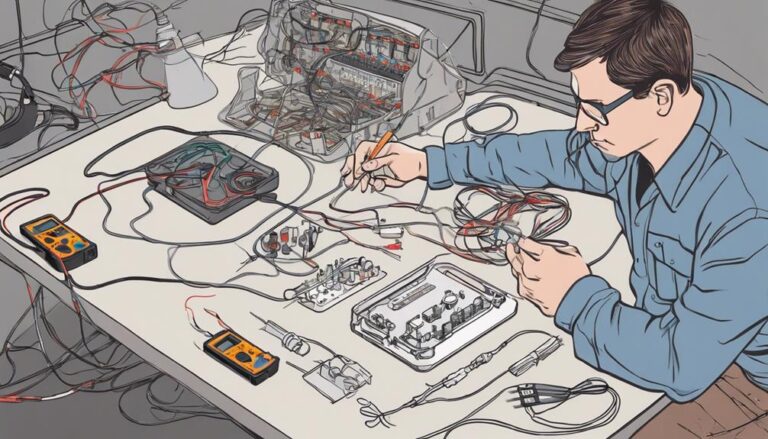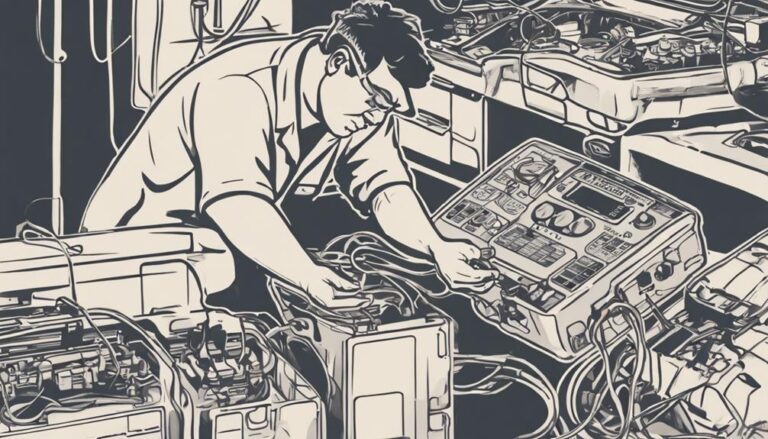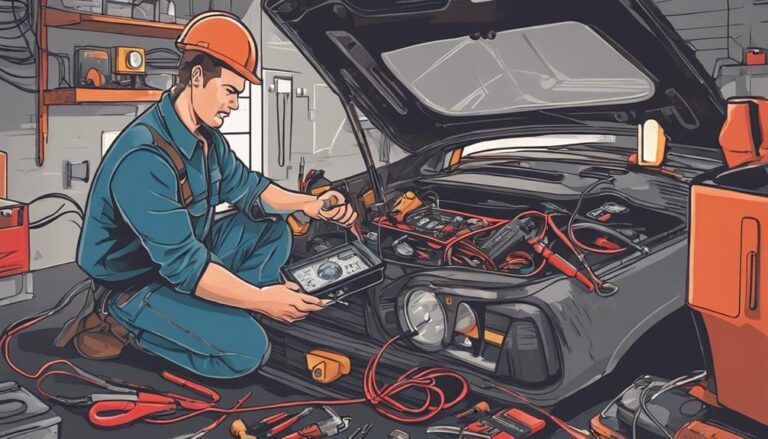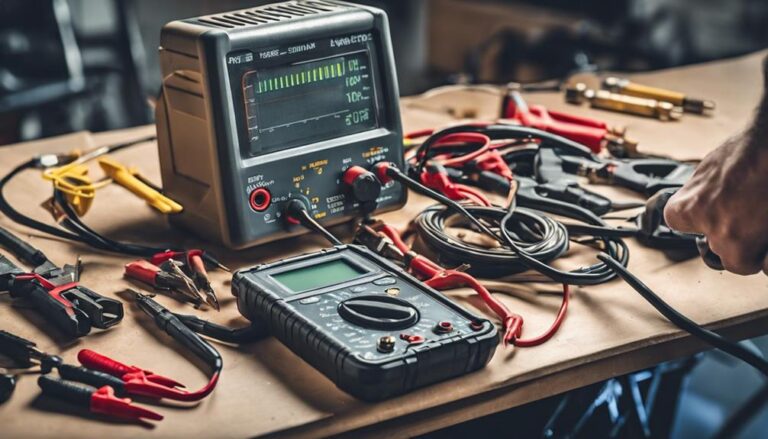Top 5 Fixes for Car Electrical System Issues
Having trouble with your car's electrical system issues? Wondering how you can resolve them efficiently and cost-effectively? Discover the top 5 fixes that can get you back on the road smoothly and safely.
From tackling alternator problems to addressing battery cable issues, each solution plays a crucial role in ensuring your vehicle's optimal performance.
Stay tuned to uncover these essential fixes that every car owner should be aware of!
Key Takeaways
- Regularly maintain and replace alternators to prevent power loss and costly repairs.
- Test and replace car batteries every 3-5 years for optimal vehicle performance.
- Timely inspection and replacement of spark plugs prevent engine trouble and enhance fuel efficiency.
- Check and replace blown fuses promptly to avoid electrical failures in your vehicle.
Alternator Replacement
When replacing the alternator in your car, it's crucial to be aware of the signs indicating a potential issue and the average cost involved. The average cost ranges from $608 to $790 for this repair. Signs of a failing alternator include power warning lights illuminating while driving and electrical components losing power. Alternators have wearing parts that are consistently under strain, making them prone to potential failure. To prevent alternator issues, regular maintenance and quick repairs are essential.
Voltage regulation is a critical function of the alternator. It ensures that the electrical systems in your vehicle receive a consistent flow of power. If the alternator fails to regulate voltage correctly, it can lead to various electrical malfunctions. Additionally, drive belt maintenance is vital for the proper functioning of the alternator. The drive belt is responsible for transferring power from the engine to the alternator. Regular inspection and replacement of the drive belt can prevent alternator issues and ensure the efficient operation of your vehicle's electrical system.
Battery Testing and Replacement
To ensure the optimal performance of your vehicle's electrical system, thorough testing and timely replacement of the car battery are crucial steps. Testing a car battery involves using a multimeter to measure voltage levels accurately. A healthy car battery should maintain a voltage of around 12.6 volts when fully charged. Replacement of a car battery is recommended every 3-5 years to ensure optimal performance. Modern vehicles with advanced electronics require a properly functioning battery for smooth operation. Regularly checking and maintaining the battery can prevent unexpected breakdowns and starting issues.
| Battery Maintenance Tips | Charging System Diagnosis | Replacement Interval |
|---|---|---|
| Check for Corrosion on Terminals | Test Alternator Output | Every 3-5 years |
| Ensure Tightness of Connections | Inspect Battery Cables | |
| Keep Battery Secured in Place | Monitor Battery Voltage |
Spark Plug Inspection and Replacement
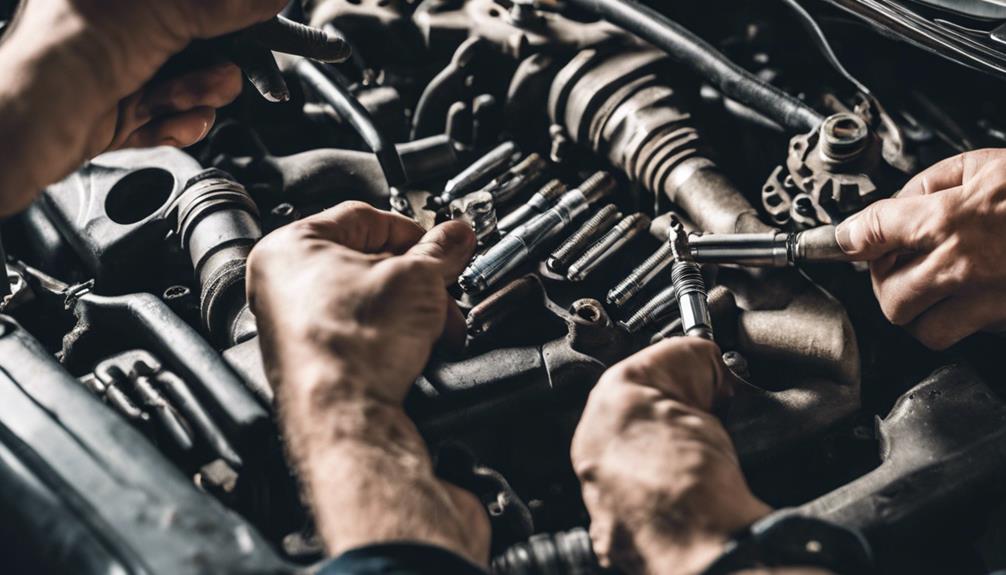
Inspecting and replacing spark plugs every 30,000 miles is essential for maintaining optimal engine performance and fuel efficiency. Here are four key points to consider when dealing with spark plug inspection and replacement:
- Signs of Wear: Look out for rough idling, engine misfires, and decreased fuel efficiency, which could indicate bad spark plugs.
- Cost Consideration: The average replacement cost for spark plugs ranges from $207 to $264 per plug. Regular maintenance can save you from more expensive repairs down the line.
- Engine Impact: Faulty spark plugs can lead to engine trouble, reduced gas mileage, and power surges. Ignoring these issues can have a negative impact on your driving experience.
- Performance Benefits: Regularly replacing spark plugs not only prevents ignition issues but also improves engine performance. It's a small investment that can result in significant performance upgrades.
Fuse Identification and Replacement
Identifying and replacing fuses is crucial for maintaining the electrical integrity of your car's components. Fuses act as safeguards, preventing damage to electrical systems by interrupting the circuit in case of excessive current flow.
To troubleshoot fuses, visually inspect them for a broken wire or a darkened appearance, indicating a blown fuse. Fuses are color-coded and labeled with amp ratings for easy identification. When replacing a blown fuse, ensure the new fuse matches the exact amp rating and size of the original to maintain compatibility. Selecting the correct amp rating is vital to prevent electrical overloads that could lead to component failure.
Regular maintenance, including checking and promptly replacing blown fuses, is essential for preventing electrical failures in your vehicle. By following these steps, you can ensure the proper functioning of your car's electrical system and avoid costly repairs.
Battery Cable Inspection and Replacement
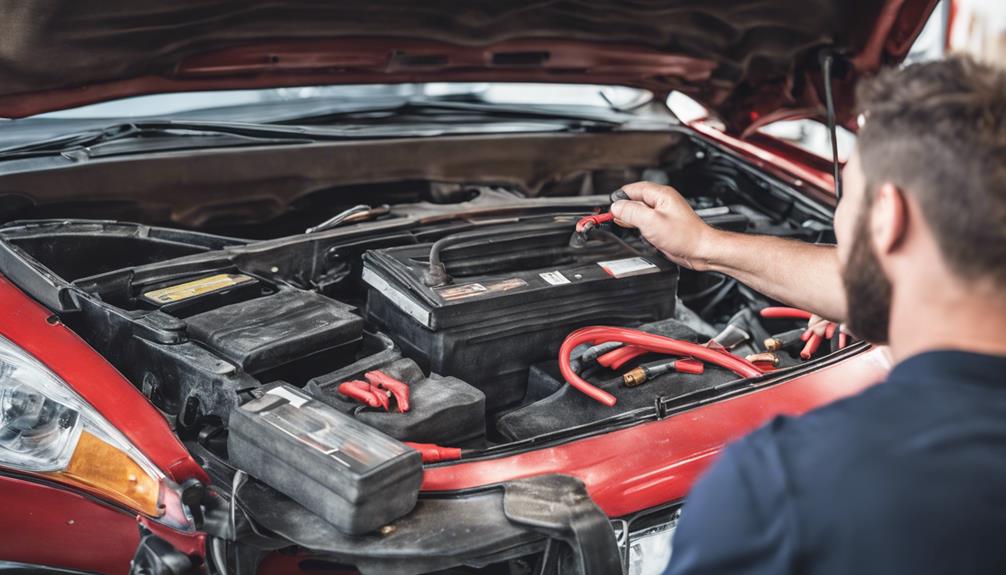
If you encounter issues with your car's electrical system, one critical area to focus on is inspecting and, if necessary, replacing the battery cables. Here are four essential steps to guide you through the process:
- Inspect for Corrosion: Check the battery cable terminals for any signs of corrosion, which can hinder electrical flow.
- Terminal Cleaning: Use a wire brush or a terminal cleaning tool to remove any corrosion buildup on the battery cable terminals.
- Voltage Drop Testing: Perform a voltage drop test to ensure that the battery cables are transmitting power efficiently to the electrical components.
- Maintenance: Regularly inspect and maintain the battery cables to prevent future issues and ensure a reliable electrical connection throughout your vehicle.
Frequently Asked Questions
Can Electrical Issues in a Car Be Fixed?
You can fix car electrical issues! DIY solutions like replacing dead batteries or fuses are doable. Professional repairs by mechanics tackle complex problems. Common causes include faulty alternators or wiring. Prevent issues with regular maintenance.
What Is the Most Common Electrical Problem in a Car?
If you notice dim headlights while driving, you might have an alternator failure causing battery drain. Immediate attention to this common issue is crucial for proper vehicle operation. Resolve it swiftly to avoid further complications.
Are Electrical Problems in Cars Expensive to Fix?
Fixing car electrical issues can be pricey, but fear not! Embrace cost-effective solutions and DIY troubleshooting. Don't let expenses shock you. You can tackle these problems yourself with a little know-how and determination.
How Do You Troubleshoot Electrical Wiring in a Car?
To troubleshoot electrical wiring in a car, start by checking connections for damage or looseness. Use a multimeter for precise testing of continuity and identify any faults. This method helps locate and address wiring issues effectively.
Conclusion
In conclusion, keeping up with regular maintenance and addressing car electrical system issues promptly can save you time and money in the long run.
Remember, a well-maintained vehicle is like a well-oiled machine, ensuring smooth operation and reliable performance on the road.
Stay ahead of potential problems by staying informed and proactive in addressing any issues that arise.
Your car will thank you for it with smooth rides and trouble-free driving.

